accidents
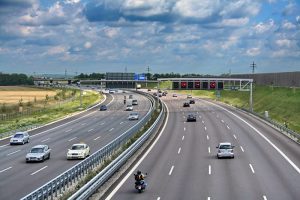 On September 23, 1989, one of the worst days for accidents on the German Autobahn, five huge pileups involving 256 cars with a large number of series injuries, occurred due to heavy fog in the area. The Autobahn in Germany has no speed limits, and cars often travel as fast as 140 miles per hour, which in foggy conditions, is a recipe for disaster. Most of us would think that driving at the speeds seen on the Autobahn would be catastrophic. Here in the United States, where most such highways have a speed limit of 80 miles per hour, travelling at 140 miles per hour would seem more like something you might need a pilot’s license for, rather that a driver’s license.
On September 23, 1989, one of the worst days for accidents on the German Autobahn, five huge pileups involving 256 cars with a large number of series injuries, occurred due to heavy fog in the area. The Autobahn in Germany has no speed limits, and cars often travel as fast as 140 miles per hour, which in foggy conditions, is a recipe for disaster. Most of us would think that driving at the speeds seen on the Autobahn would be catastrophic. Here in the United States, where most such highways have a speed limit of 80 miles per hour, travelling at 140 miles per hour would seem more like something you might need a pilot’s license for, rather that a driver’s license.
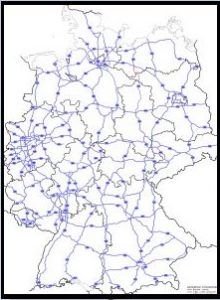
Given the speeds on the Autobahn, one might expect it to be one of the most dangerous roads in the world, but their assumption would be very wrong. In reality, the Autobahn is statistically safer than any interstate or other such highway in the world. That seems strange given the speeds seem there. Of course, not all of the Autobahn is speed limit free. The German Autobahnen are widely known for having no federally mandated speed limit for some classes of vehicles, with classes of vehicles being the operative word. There are limits posted, and enforced, in areas that are urbanized, substandard, accident-prone, or under construction. On speed-unrestricted stretches, an advisory speed limit of 81 miles per hour applies. While driving faster is not illegal, as such in the absence of a speed limit, it can cause an increased liability in the case of a collision…which the mandatory auto insurance has to cover. Courts have ruled that an “ideal driver” who is exempt from absolute liability for “inevitable” tort under the law would not exceed the suggested speed limit.

The Autobahn was conceived in the 1920s, and with Hitler’s embrace of the system in 1933, construction was scheduled and began 1936. It was a bold idea to put into motion, and probably the only Hitler back idea that is still in operation today. Of course, Hitler didn’t have many “good” ideas in his lifetime, so this one was an exceptional feat, and obviously not an idea of his making. Nevertheless, the very safe Autobahn continues to be utilized by all of Germany today. It is not accident free, as we have seen by the awful accident of September 23, 1989, but these tragedies seem to be few and far between.
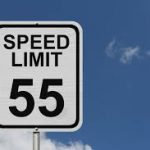 As automobiles became commonplace…or at least more so than they had been, people began to realize that there needed to be some controls on their usage…specially in the area of speed. Most people know that is a car or other vehicle can go fast, there will always be someone out there, who wants to push the envelope and see just how fast it will go, throwing caution to the wind. With increased speeds would also follow, increased numbers of accidents. There would need to be some rules to follow.
As automobiles became commonplace…or at least more so than they had been, people began to realize that there needed to be some controls on their usage…specially in the area of speed. Most people know that is a car or other vehicle can go fast, there will always be someone out there, who wants to push the envelope and see just how fast it will go, throwing caution to the wind. With increased speeds would also follow, increased numbers of accidents. There would need to be some rules to follow.
There were already speed limits in the United States for non-motorized vehicles. In 1652, the colony of New Amsterdam, which is now New York, issued a decree stating that “[N]o wagons, carts or sleighs shall be run, rode or driven at a gallop” at the risk of incurring a fine starting at “two pounds Flemish,” or about $150 in today’s currency. In 1899, the New York City cabdriver Jacob German was arrested for driving his electric taxi at 12 miles per hour, but did the prior law really apply electric cars? It was becoming more and more obvious that some sort of legislation was necessary to ensure the safety of those operating these new machines, and those around them. So began the path to Connecticut’s 1901 speed limit legislation. Representative Robert Woodruff submitted a 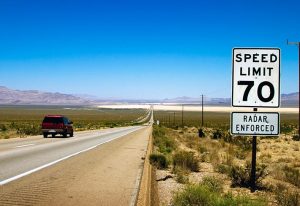 bill to the State General Assembly proposing a motor-vehicles speed limit of 8 miles per hour within city limits and 12 miles per hour outside. While the law passed in May of 1901 specified higher speed limits, it required drivers to slow down upon approaching or passing horse-drawn vehicles, and come to a complete stop if necessary to avoid scaring the animals. I can’t imagine some of the restrictions listed there, because people would be stopped more than they were driving, but you have to start somewhere, and Connecticut was that starting point, when, on May 21, 1901 it became the first state to pass a law regulating motor vehicles, limiting their speed to 12 miles per hour in cities and 15 miles per hour on country roads.
bill to the State General Assembly proposing a motor-vehicles speed limit of 8 miles per hour within city limits and 12 miles per hour outside. While the law passed in May of 1901 specified higher speed limits, it required drivers to slow down upon approaching or passing horse-drawn vehicles, and come to a complete stop if necessary to avoid scaring the animals. I can’t imagine some of the restrictions listed there, because people would be stopped more than they were driving, but you have to start somewhere, and Connecticut was that starting point, when, on May 21, 1901 it became the first state to pass a law regulating motor vehicles, limiting their speed to 12 miles per hour in cities and 15 miles per hour on country roads.
Immediately following this landmark legislation, New York City went to work to keep up, and introduced the world’s first comprehensive traffic code in 1903. Adoption of speed regulations and other traffic codes was a slow and uneven process across the nation, however. As late as 1930, a dozen states had no speed limit, while 28 states did not even require a driver’s license to operate a motor vehicle. Rising fuel prices contributed to the lowering of speed limits in several states in the early 1970s, and in January 1974 President Richard Nixon 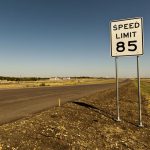 signed a national speed limit of 55 miles per hour into law. These measures led to a welcome reduction in the nation’s traffic fatality rate, which dropped from 4.28 per million miles of travel in 1972 to 3.33 in 1974 and a low of 2.73 in 1983.
signed a national speed limit of 55 miles per hour into law. These measures led to a welcome reduction in the nation’s traffic fatality rate, which dropped from 4.28 per million miles of travel in 1972 to 3.33 in 1974 and a low of 2.73 in 1983.
Concerns about fuel availability and cost later subsided, and in 1987 Congress allowed states to increase speed limits on rural interstates to 65 mph. The National Highway System Designation Act of 1995 repealed the maximum speed limit. This returned control of setting speed limits to the states, many of which soon raised the limits to 70 mph and higher on a portion of their roads, including rural and urban interstates and limited access roads.

